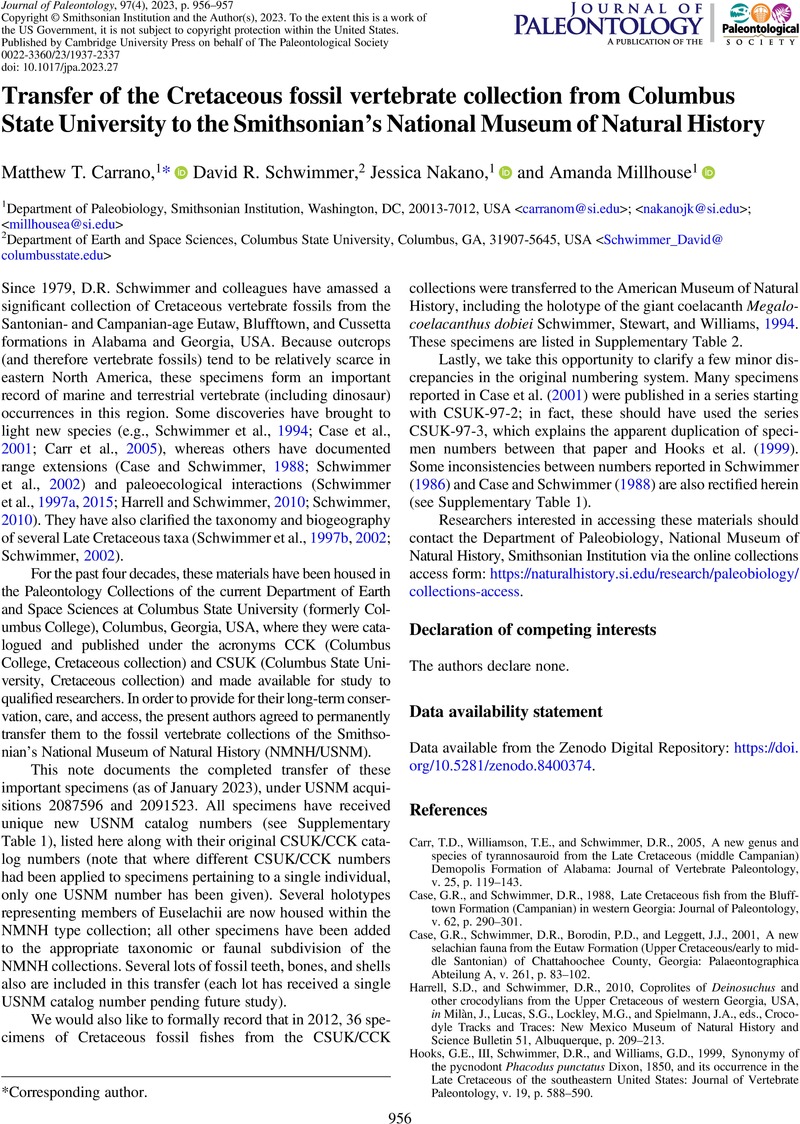Schwimmer, D.R.,
2010, Bite marks of the giant crocodylian
Deinosuchus on Late Cretaceous (Campanian) bones,
in Milàn, J., Lucas, S.G., Lockley, M.G., and Spielmann, J.A., eds., Crocodyle Tracks and Traces: New Mexico Museum of Natural History and Science Bulletin 51, Albuquerque, p. 183–190.
Google Scholar 